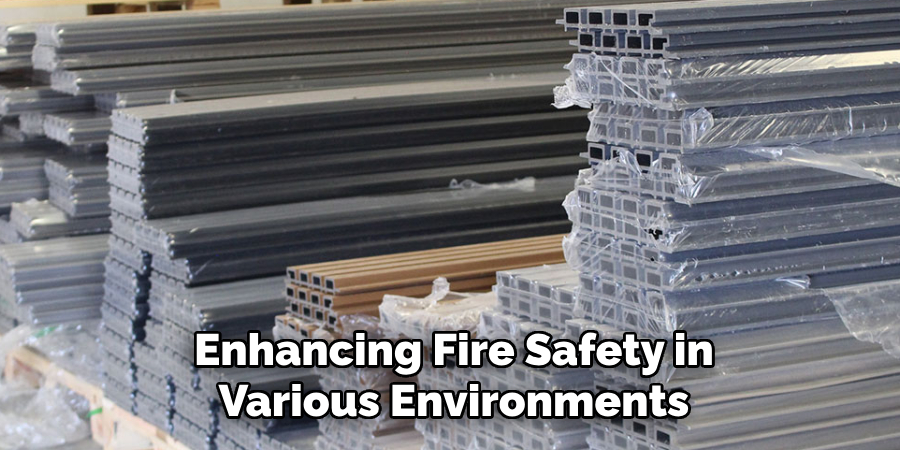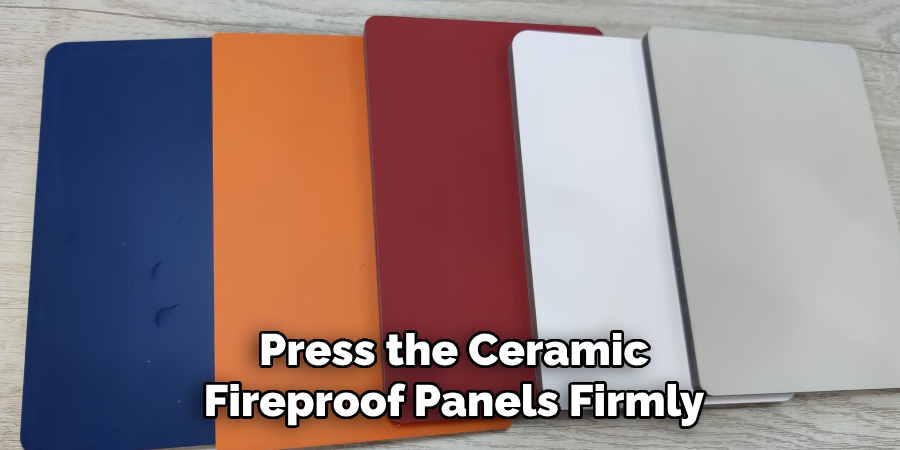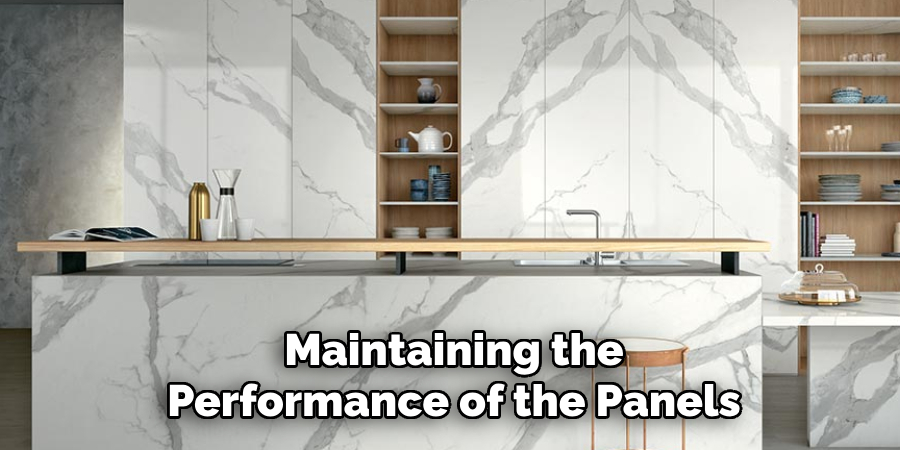Ceramic fireproof panels are critical in enhancing fire safety, offering exceptional heat resistance and durability. These panels are designed to withstand extreme temperatures, making them a reliable choice for both residential and industrial applications.

Commonly used in settings such as fireplaces, stove surrounds, walls, and industrial machinery enclosures, ceramic fireproof panels provide an added layer of protection against fire hazards. Their effectiveness lies in their unique composition, ensuring minimal heat transfer and robust performance under intense conditions. However, the key to maximizing their benefits lies in proper installation.
Understanding how to install ceramic fireproof panels is essential to ensure both their functionality and longevity. A precise and thorough installation process ensures the panels deliver the expected fire resistance and durability, offering peace of mind for homeowners and businesses alike. You can achieve a safer, well-protected environment by integrating ceramic fireproof panels.
Understanding Ceramic Fireproof Panels
What Are Ceramic Fireproof Panels?
Ceramic fireproof panels are specialized building materials made from high-temperature-resistant ceramic materials. These panels are engineered to withstand direct exposure to flames and extreme heat without compromising their structural integrity. Due to their innovative composition, they play a critical role in enhancing fire safety in various environments.
Key Benefits
One of the primary advantages of ceramic fireproof panels is their exceptional fire resistance. They act as a barrier, slowing down the spread of flames and minimizing heat transfer to adjoining areas.
Aside from fire resistance, they provide excellent heat insulation, reducing energy costs and maintaining safe surface temperatures. Furthermore, these panels offer remarkable durability, ensuring long-term performance even under adverse conditions.
Common Types
Ceramic fireproof panels are available in several types to cater to different applications. Pre-fabricated panels are ready-to-use and easily customizable for most installations. Reinforced panels combine ceramic material with additional reinforcements to provide superior strength, making them ideal for heavy-duty industrial settings.

Lastly, decorative fireproof panels combine functionality with aesthetics, offering stylish yet safe solutions for residential spaces like fireplaces and stove surrounds. Each type is designed to meet specific requirements, ensuring versatility across various applications.
Preparing for Installation
Assessing the Installation Area
Before beginning the installation of ceramic fireproof panels, it is essential to properly assess the area. Start by inspecting the surface to ensure it is structurally sound, clean, and free from debris or moisture. A stable base is crucial for effective installation and long-term durability.
Additionally, carefully measure the dimensions of the installation space and plan the panel layout to minimize the number of cuts and gaps. This step enhances the overall aesthetics and maintains the integrity of the fireproofing properties.
Tools and Materials Needed
Having the right tools and materials on hand prior to installation ensures a smoother process. Essential items include fireproof adhesive for secure attachment, screws and a drill for anchoring, and a level to ensure a straight alignment.
Cutting tools, such as a utility knife or saw, may be needed for precise adjustments. Always use appropriate safety gear such as gloves, goggles, and a dust mask to prioritize safety during installation, as working with ceramic materials can generate dust and small particles.
Compliance with Fire Safety Codes
Lastly, ensure that the installation meets all local fire safety codes and regulations. Different regions may have specific requirements regarding fireproof panels, including placement, spacing, and attachment methods.
Consulting local building codes or seeking guidance from a certified inspector can help avoid compliance issues while ensuring the completed installation provides maximum fire resistance and safety. These precautionary steps lay the foundation for an efficient and safe installation process.
Cutting and Sizing Ceramic Panels
Marking and Measuring
Before cutting the ceramic panels, accurate measurements are essential for ensuring a proper fit. Use a tape measure to carefully determine the required dimensions, and mark the measurements on the panel using a non-permanent marker or grease pencil.
This precise marking helps minimize errors and material wastage during the cutting process. Double-check all measurements to ensure accuracy before proceeding.

Cutting the Panels
To cut the panels, use a tile saw or an angle grinder equipped with a diamond blade, as these tools are specifically designed to handle the hardness of ceramic materials. Make slow and steady cuts along the marked lines to achieve clean edges.
Proper tools and techniques reduce the risk of damage to the panel, such as chipping or cracking during the cutting process. After cutting, smooth the edges using sandpaper or a file to eliminate sharp corners and rough finishes, ensuring safe handling and a professional appearance.
Trial Fitting
Once the panels are cut and smoothed, perform a trial fitting by placing them in their intended positions. This step ensures proper alignment and reveals any necessary adjustments before final installation. Adjust as needed to maintain seamless joints and correct sizing, which is crucial for both functional and aesthetic integrity.
How to Install Ceramic Fireproof Panels: Installing Ceramic Fireproof Panels
Applying Fireproof Adhesive
To begin the installation, apply fireproof adhesive evenly across the surface using a notched trowel. This ensures a secure bond between the panels and the substrate. Be careful not to use excessive adhesive, which may cause seepage around the edges, compromising the installation’s appearance and integrity. Work methodically in sections to maintain control and ensure even coverage.
Positioning the Panels
Once the adhesive is applied, press the ceramic fireproof panels firmly into place. Start at the bottom of the installation area and gradually work your way upward.

This approach helps to ensure that lower panels support the weight of those above. Use spacers to maintain consistent gaps between panels, which is essential for achieving a professional and uniform finish. Proper alignment during this stage is crucial, as adjustments become difficult once the adhesive sets.
Securing Panels with Screws
For added stability, secure the panels using fire-rated screws. Begin by drilling pilot holes through the ceramic panels at appropriate intervals to ensure even weight distribution and minimize stress on the material. Insert the screws carefully, ensuring they are flush with the panel surface to prevent protrusions that could interfere with the final appearance or functionality.
This additional step enhances the durability of the installation, particularly in areas exposed to significant heat or vibrations. Properly secured panels contribute to the finished project’s safety and longevity.
Sealing Joints and Edges
Filling Gaps
Once the panels are securely attached, it is important to seal all gaps and seams using a high-quality, fire-resistant caulk or sealant. Carefully apply the sealant along the joints between panels, ensuring even coverage for optimal performance.
This step prevents the intrusion of air, moisture, or heat, contributing to the overall fireproofing and durability of the installation. Use a smoothing tool or your finger to evenly spread the sealant, creating a neat finish while ensuring that all gaps are completely filled.
Edge Finishing
Add trim or metal edge protectors along the panel edges to achieve a clean and professional appearance. These protective features not only enhance the visual appeal of the installation but also add an extra layer of durability by safeguarding the edges from chipping or wear. Select edge protectors that complement the design while maintaining the practicality needed for long-term use.
Inspecting Seals
After applying the caulk and finishing edges, thoroughly inspect the work to ensure all joints are sealed and airtight. Any missed gaps or weak application areas should be promptly addressed. Properly sealed joints are critical for maximizing fireproofing effectiveness and prolonging the installation’s life, offering both safety and reliability.
Testing and Final Adjustments
Testing for Stability
To ensure the installation is secure and reliable, begin by checking the panels for stable adhesion and even alignment. Look for any loose spots or uneven areas that could compromise the overall structure. Gently apply pressure along the edges and center of each panel to confirm they are firmly attached. Any noticeable shifts or inconsistencies should be addressed to reinforce the stability of the installation.
Heat Resistance Check
Conducting a small heat exposure test is essential to verify the fireproofing performance of the installation. Expose a controlled section of the material to moderate heat levels, replicating the potential conditions it may encounter.
Observe how the material responds—ensure no warping, cracking, or discoloration would indicate a failure in heat resistance. This test provides confidence in the effectiveness of the fireproofing measures.
Making Adjustments
After completing stability and heat resistance checks, inspect the installation again for any remaining issues. Tighten any loose screws that may have shifted during testing and reapply adhesive or sealant to areas showing gaps or weaknesses. These final adjustments are critical for ensuring the fireproof installation’s long-term durability, safety, and reliability.
Maintenance Tips for Fireproof Panels
Proper maintenance of fireproof panels is essential to ensure their long-term effectiveness and durability. Following these recommendations will help preserve the integrity of the installation.
Cleaning Recommendations
To maintain the appearance and functionality of fireproof panels, clean them regularly using a damp cloth to remove soot, dust, and debris. Avoid abrasive cleaners or harsh chemicals, as these can degrade the surface of the panels and compromise their fire-resistant properties. For stubborn stains, use mild soap and rinse thoroughly while ensuring no residue remains.
Periodic Inspections
Conduct routine inspections to check for any signs of wear or damage. Pay close attention to cracks in the panels, loose fittings, or damaged seals. Address any issues promptly to prevent further deterioration, as even small vulnerabilities can reduce the overall fireproofing effectiveness.
Reapplying Sealants
Fire-resistant sealants play a crucial role in maintaining the performance of the panels. Refresh these sealants every 1-2 years or per the manufacturer’s guidelines. This ensures optimal protection and helps preserve the fire-resistant barrier. Properly maintained, fireproof panels will continue to safeguard your space effectively, offering peace of mind and enhanced safety.

Conclusion
Ceramic fireproof panels enhance fire safety and heat resistance, making them an essential choice for protecting homes and businesses. Their durability and effectiveness rely on proper preparation, installation, and ongoing maintenance to ensure long-term performance.
By following best practices, as outlined in guides like “How to Install Ceramic Fireproof Panels,” users can maximize their safety and peace of mind. Investing in these panels safeguards your space from fire hazards and adds lasting value and reliability. Make the proactive choice to prioritize safety with ceramic fireproof panels today.
Specialization:
- Master of wheel-throwing, hand-building, and advanced glazing techniques
- Focus on creating both functional pottery and decorative art pieces
Recognition:
- Celebrated by collectors and art enthusiasts for creating one-of-a-kind pieces that blend artistry with functionality
- Participates in local and national exhibitions, earning accolades for his innovative designs and craftsmanship
Passion:
- Deeply committed to exploring and pushing the boundaries of ceramic artistry
- Continuously experiments with new materials, firing techniques, and artistic concepts to evolve his craft
Personal Philosophy:
- Believes in the transformative power of art, aiming to evoke emotions and connections through his ceramic creations
- Advocates for sustainability in ceramics, using eco-friendly materials and practices whenever possible


